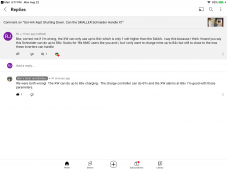I have a JK BMS, which I believe will handle a 17s configuration, and a Sol-Ark 15k, which I believe will handle up to 63V. While I already have 16 Eve 280Ah cells, is there any reason why I shouldn't order another cell and make it a 17s configuration?
I'd rather have the extra capacity if possible, but I'm sure there must be a good reason why this isn't a popular configuration.
I'd rather have the extra capacity if possible, but I'm sure there must be a good reason why this isn't a popular configuration.



